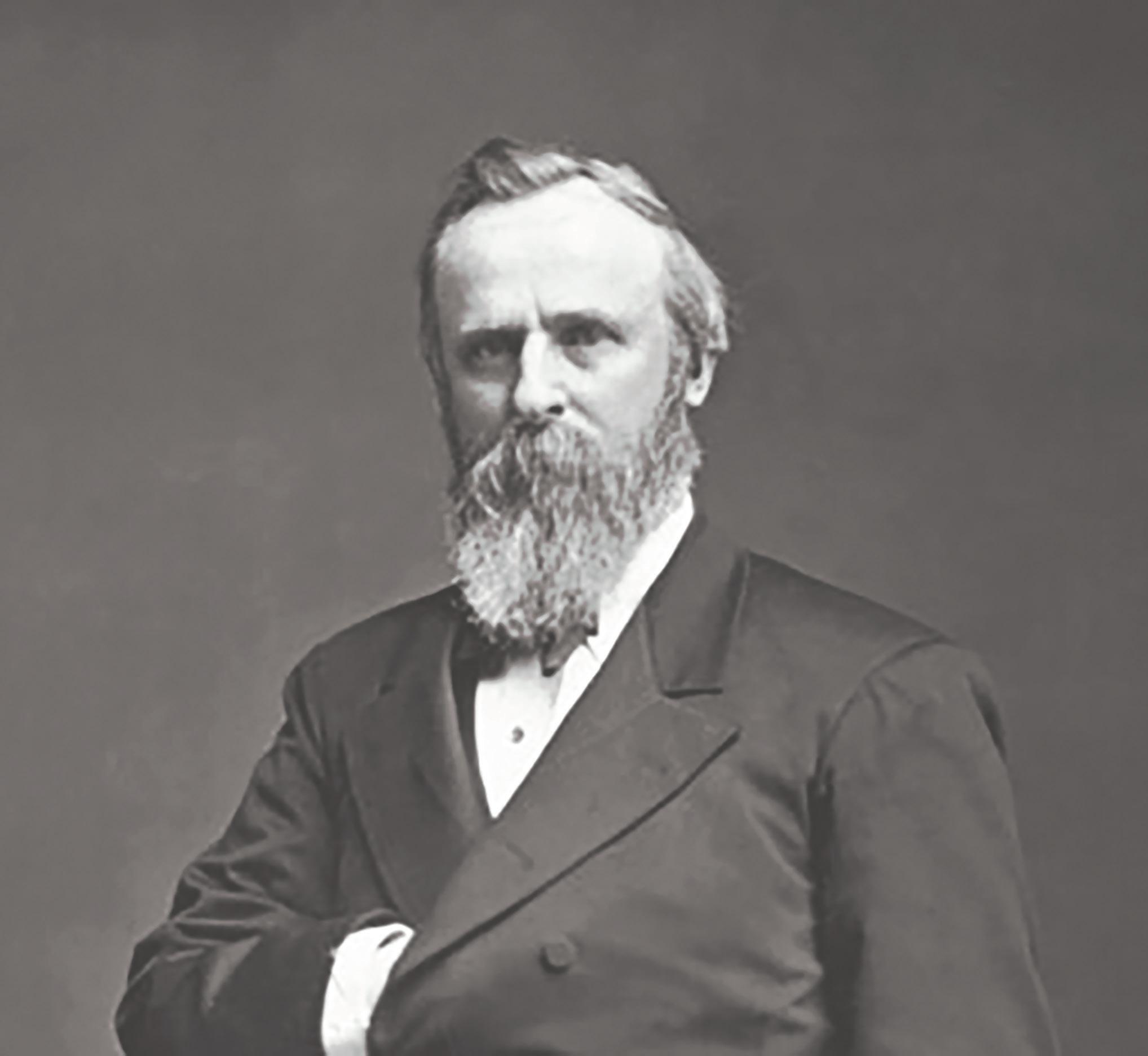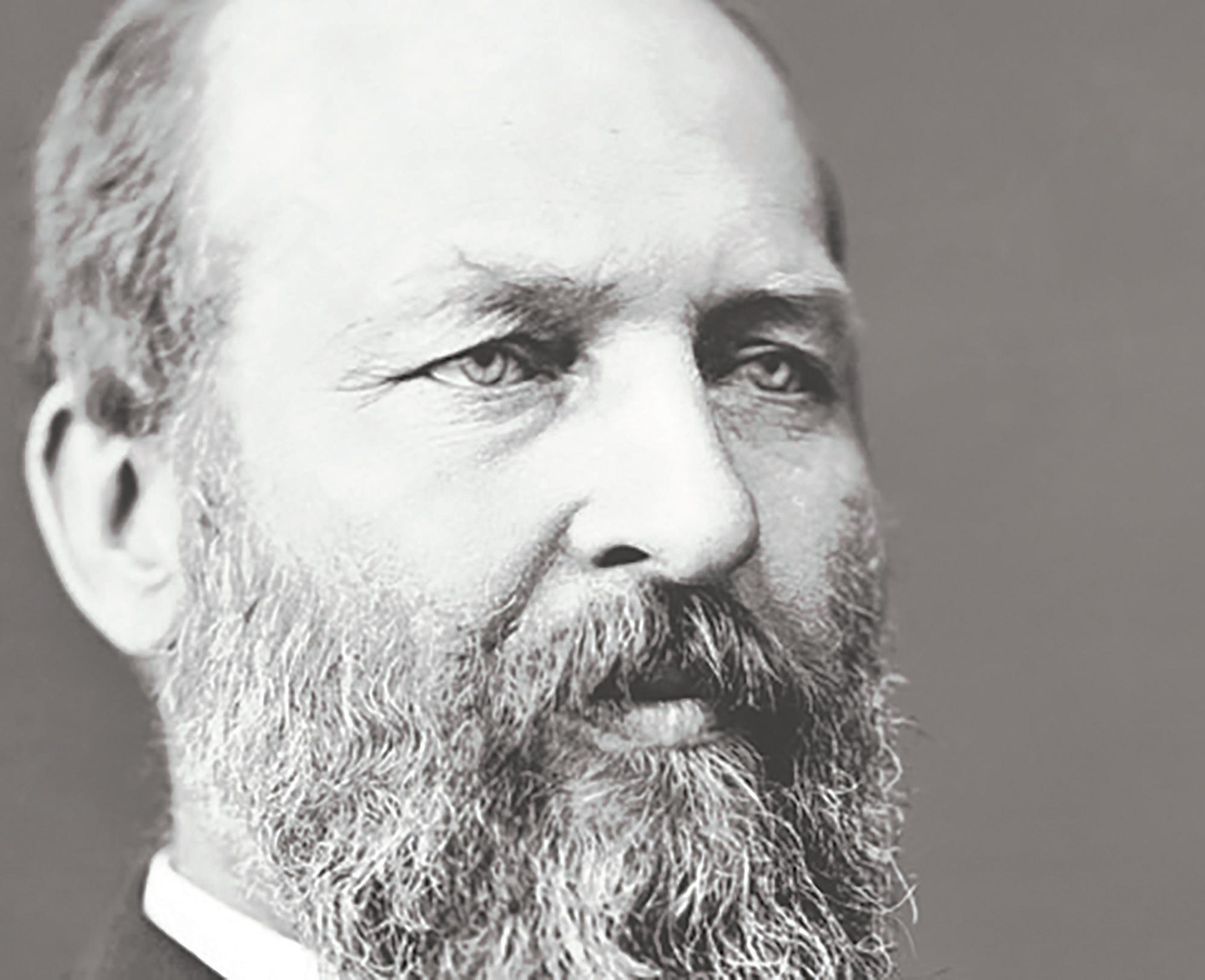
3 minute read
19th

Rutherford B. Hayes was born in Delaware, Ohio, in 1822. Rutherford’s father, a Scottish storekeeper, died several months before his birth, and his paternal uncle served as his father figure. Rutherford attended Kenyon College in Gambier, Ohio, and graduated in 1842 at the top of his class. He graduated from Harvard Law School in 1845. Rutherford married Lucy Ware Webb in 1856. Together, they had eight children, two of which died before they were three.
Rutherford’s military career began in 1858 when he accepted an appointment as solicitor for the city of Cincinnati. During the US Civil War, Rutherford served as a major in the 23rd Ohio infantry, which fought for Union forces. He would eventually be promoted to major general and would be the only future US president to be wounded in the war.
Rutherford’s political career began in 1864 when he was nominated to Congress by the governor of Ohio and served from 1868 to 1872. He would serve as governor of Ohio from 1868 to 1872. In 1876, Hayes was nominated for president of the United States, though he was not expected to win. Nevertheless, he proved victorious by one electoral vote, though the Democratic Party alleged the vote was fraudulent and would refer to Hayes as “Rutherfraud B. Hayes.” The election was so close that a special committee known as the Electoral Commission was set up to decide the winner.
On March 4, 1877, Hayes became the 19th president and first to take the presidential oath in the White House.
During his presidency, workers from the Baltimore & Ohio Railroad Company went on strike (refused to work). The strike spread and railroad workers throughout the country refused to
Mission
work. The labor disputes exploded into riots in several cities, and Rutherford made the controversial decision to send federal troops to control the riots. These troops would eventually fire into some of the crowds of rioters, killing seventy people. Although peace was restored, many were unhappy with Rutherford’s re - sponse to the matter. During his presidency, Hayes also signed bills that allowed for the development of lands in the desert southwest and other lands in the west.
The mission of Nemo Paws is to help animals in need. From rescue e orts to our southern friends to helping our local community feed forgotten and homeless pets.









Nemo Paws is seeking help for 2018. To learn more about volunteering and donations, find us on Facebook.

Rutherford did not run for a second term as president and died of a heart attack on January 17, 1893.
James A. Garfield was born on November 19, 1831, in Orange Township, Ohio. Garfield was raised by his mother as his father died when he was 17 months old. In 1851, he enrolled in Hiram College in Hiram, Ohio, before transferring to Williams College in Williamstown, Massachusetts. At Williams, James became a member of the Delta Upsilon fraternity. In 1856, Garfield returned to Hiram College as a professor of classical languages. Just one year later, in 1857, he was made president of the college.

On November 11, 1858, he married Lucretia Rudolph. Together, they would have seven children. James soon discovered that he was more suited to politics and the study of law than academia. In 1859, he was elected as state senator of Ohio and was admitted to the Ohio bar in 1860.
During the Civil War, Gar- field served under several generals and saw action at the Battle of Shiloh in Tennessee and Siege at Corinth (Mississippi). He served as the chief of staff under General William Rosecrans’s Army of the Cumberland. He would eventually be promoted to major general but left the Army to serve in the House of Representatives. James would be reelected as an Ohio representative every two years for 18 years.

In 1880, Garfield’s political career was damaged by controversies surrounding the publication of the Morey letter. The Morey letter was allegedly a letter written by James Garfield indicating that he favored an increase in Chinese immigration. At the time, increased Chinese immigration was very unpopular among politicians, and Garfield failed to confirm or deny the allegations because he could not remember if he wrote it. Nevertheless, at the Republican National Convention in 1880, Garfield gained support of his party and was nominated for president. He would defeat the Democratic candidate, Winfield Scott Hancock, to become the nation’s twentieth president.
Unfortunately, Garfield had little time to accomplish anything as president. On July 2, 1881, just under four months into his presidency, he was shot in Washington, DC, by Charles J. Guiteau, an attorney who was angry because he was denied a federal job. Guiteau would later be convicted and executed for assassination.












